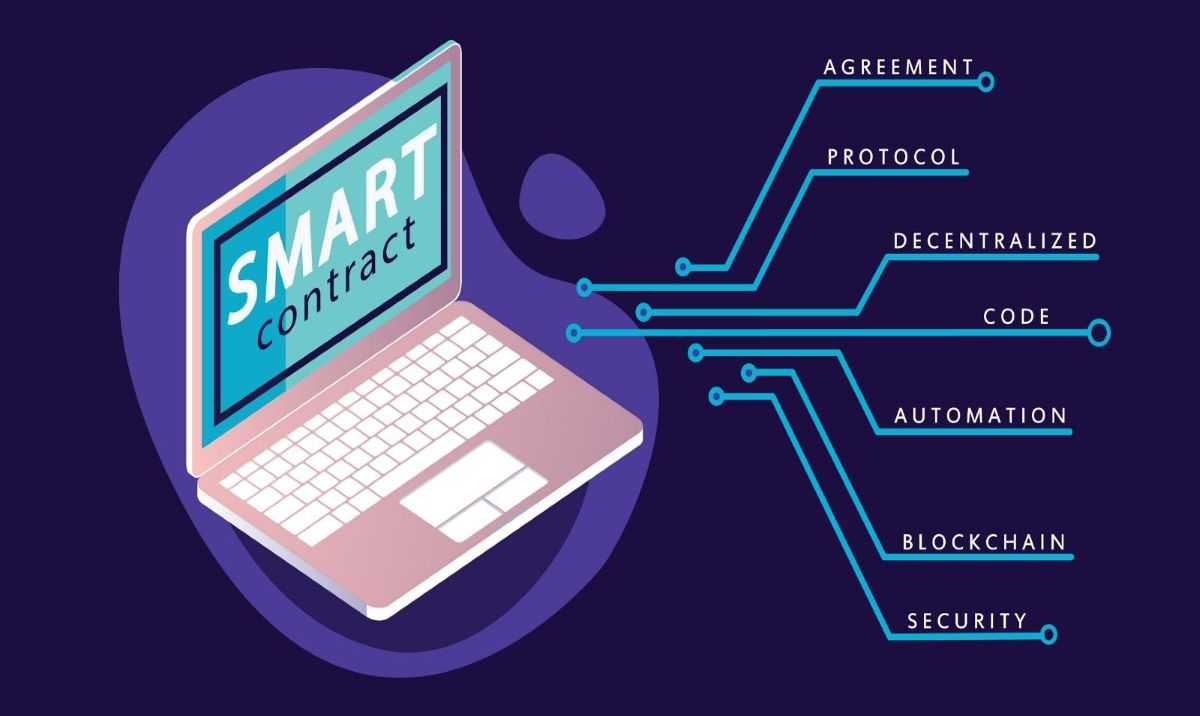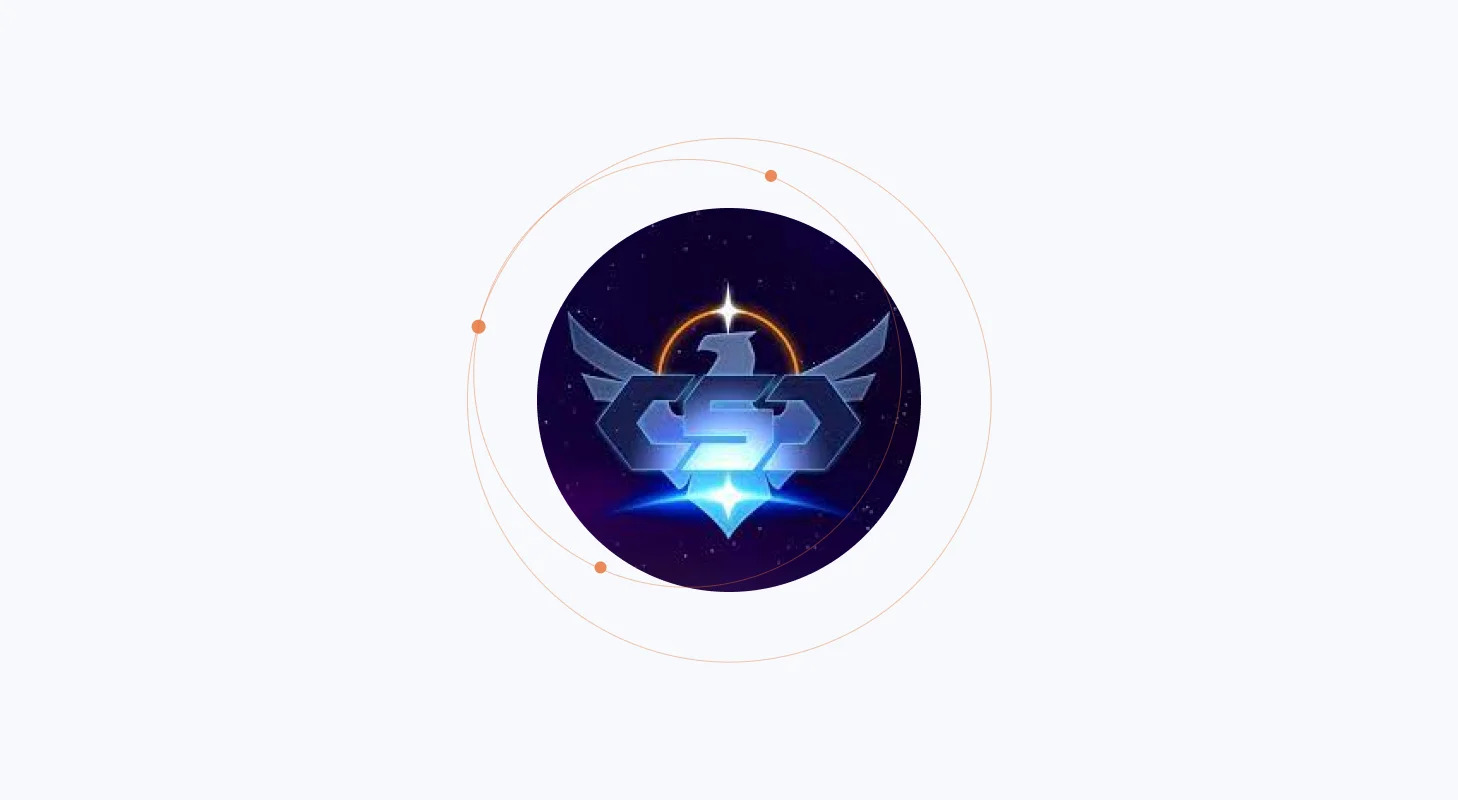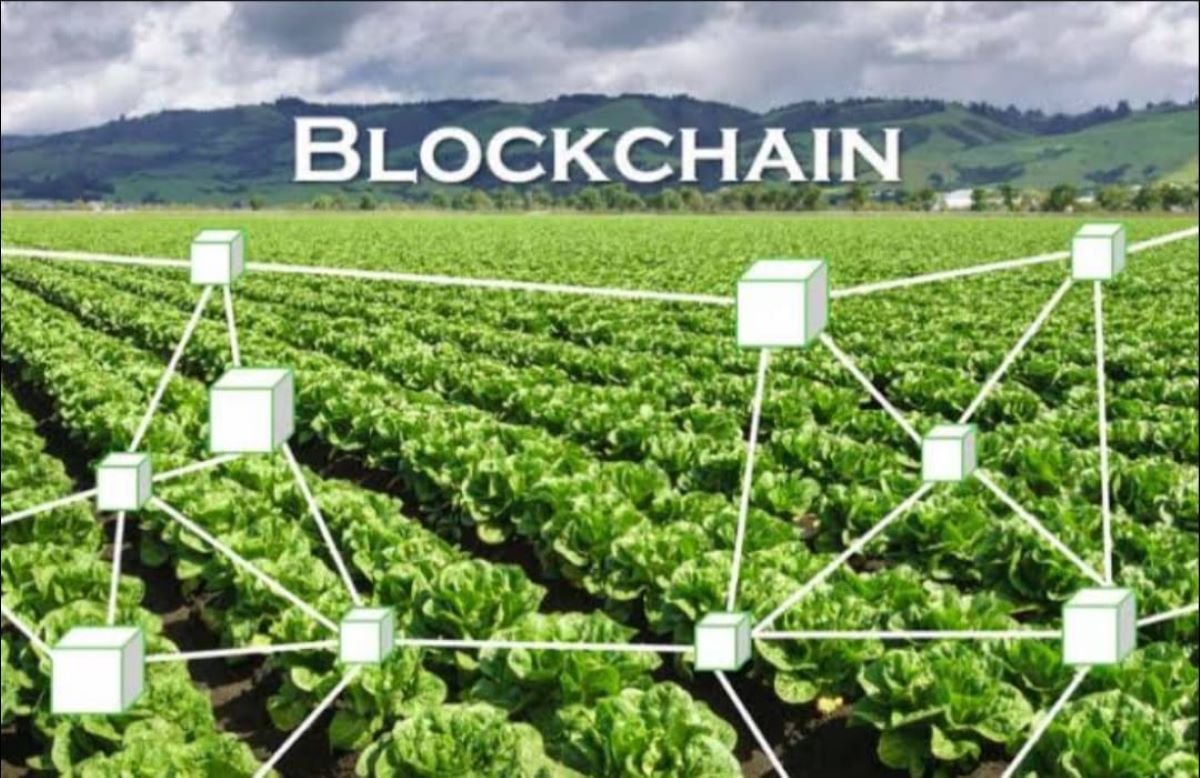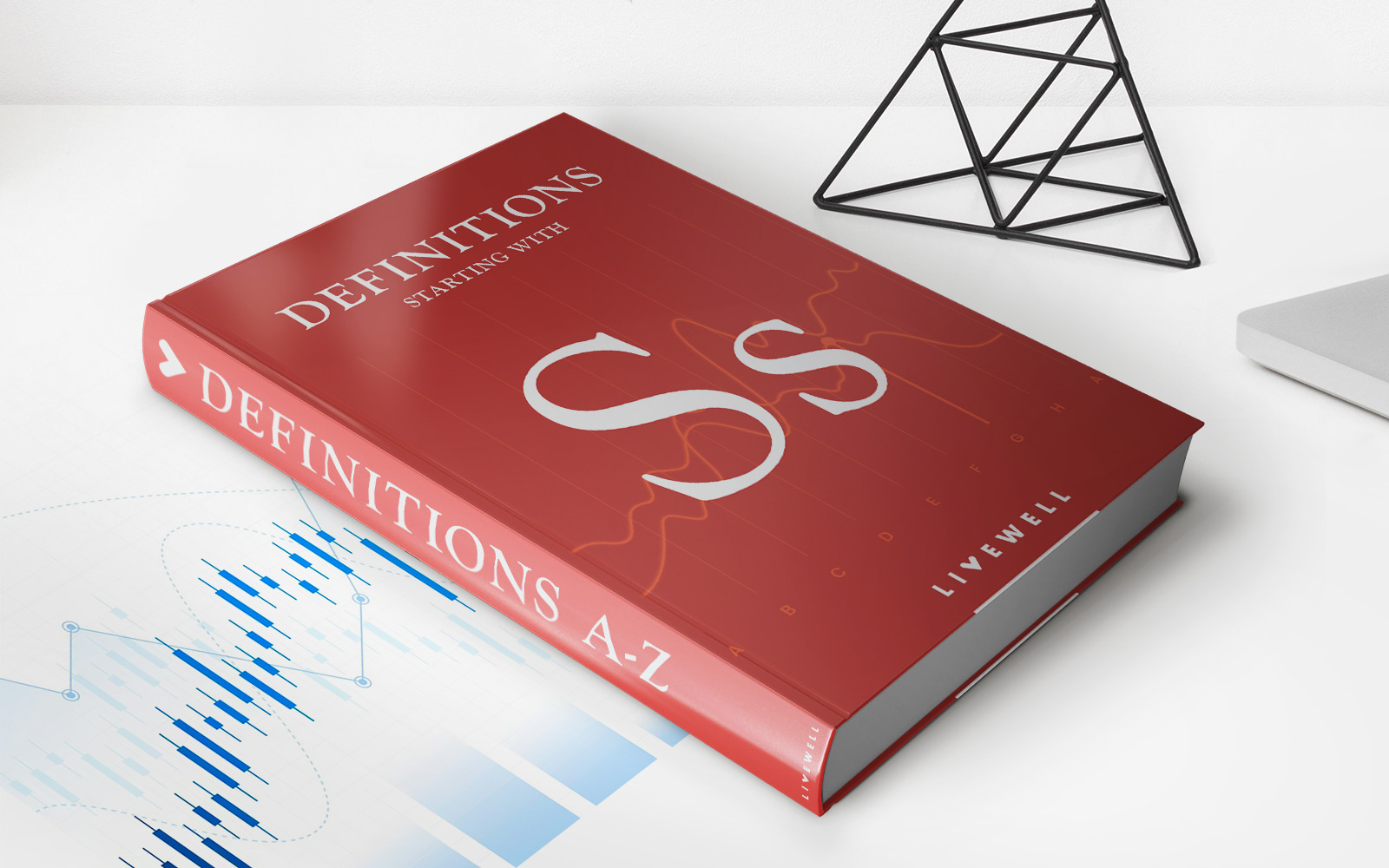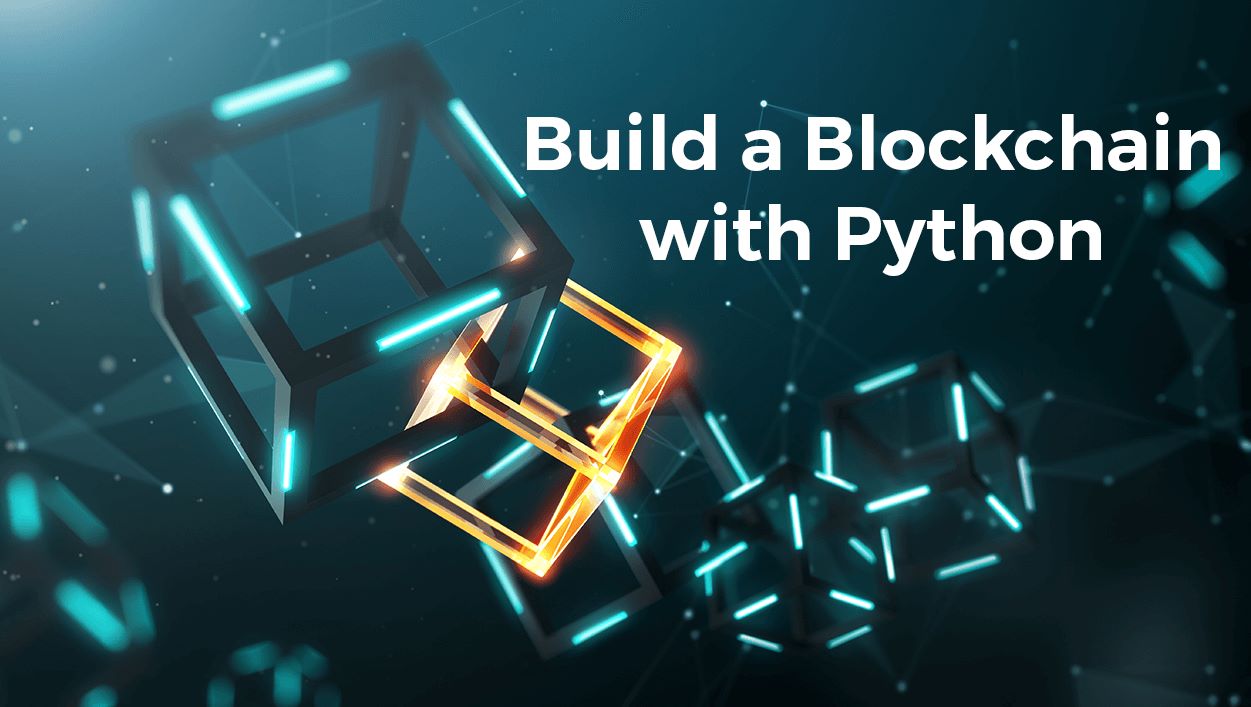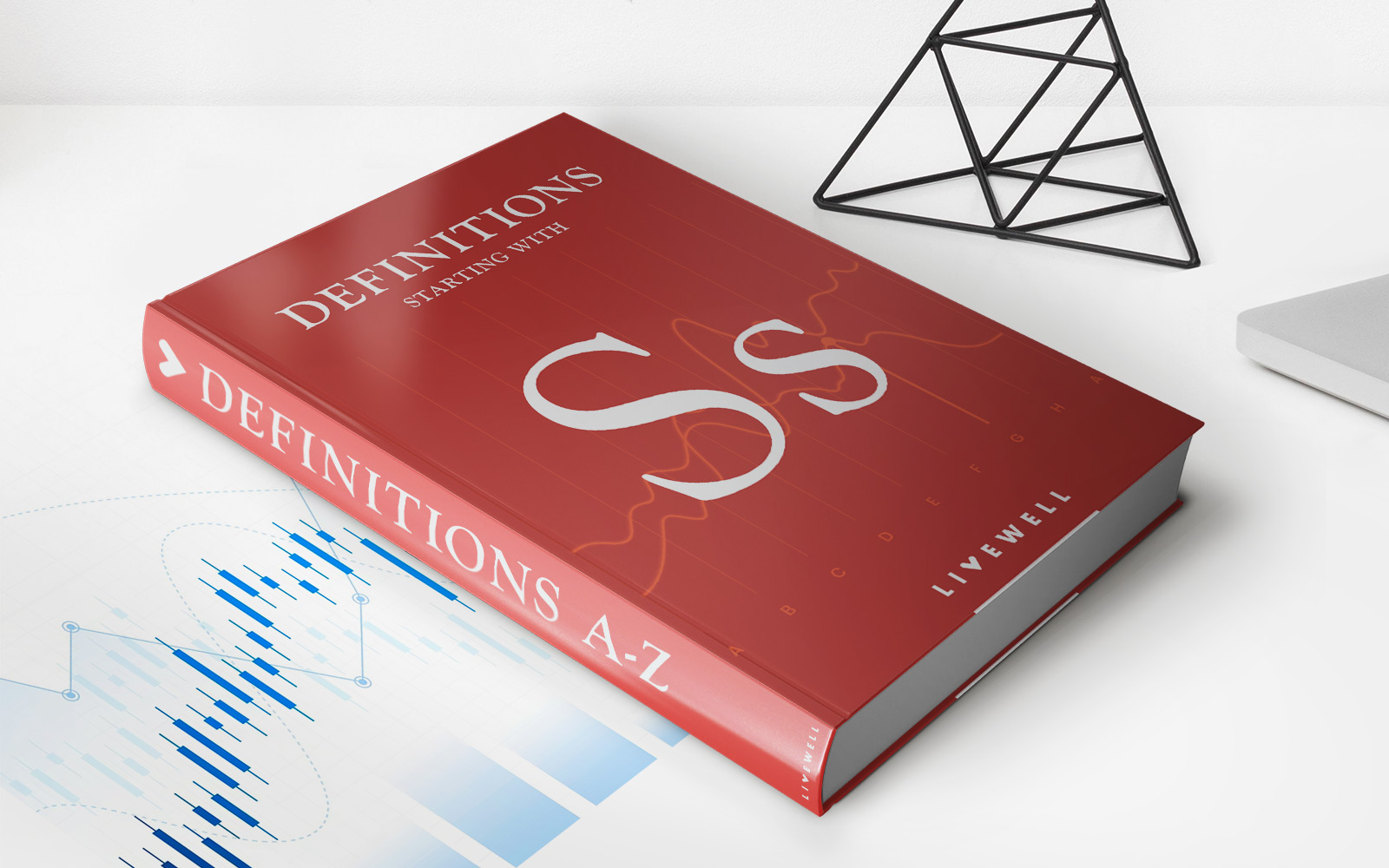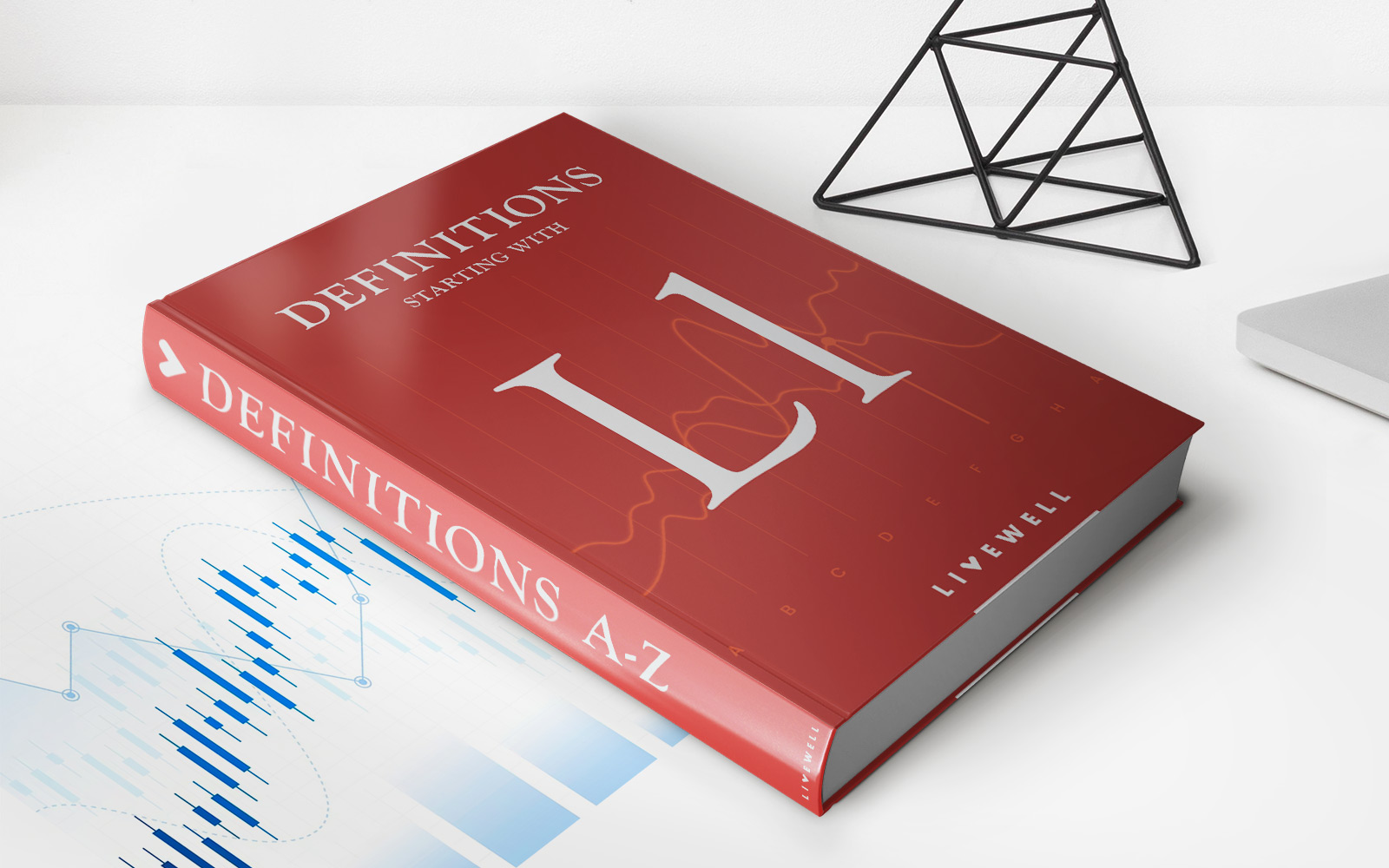Home>Finance>Which Model Describes How Data Is Written To A Blockchain


Finance
Which Model Describes How Data Is Written To A Blockchain
Published: October 23, 2023
Learn how finance data is securely written to a blockchain with our comprehensive model. Explore the intricacies of blockchain technology and its impact on the finance industry.
(Many of the links in this article redirect to a specific reviewed product. Your purchase of these products through affiliate links helps to generate commission for LiveWell, at no extra cost. Learn more)
Table of Contents
- Introduction
- Background of Blockchain Technology
- Overview of Data Writing in Blockchain
- Consensus Mechanisms
- Proof of Work
- Proof of Stake
- Delegated Proof of Stake
- Practical Byzantine Fault Tolerance
- Other Consensus Mechanisms
- Factors Influencing Data Writing Models
- Data Writing Models in Blockchain
- Straightforward Data Writing Model
- Merkle Tree Data Writing Model
- Sharding Data Writing Model
- Sidechain Data Writing Model
- Summary
- Conclusion
Introduction
Blockchain technology has revolutionized various industries, including finance, by offering secure and transparent ways to store and transfer digital assets. In a blockchain, data is stored in a decentralized and immutable manner, ensuring that transactions are verified and recorded in a trustless environment. While the concept of a blockchain and its benefits are widely understood, it is equally important to explore how data is written to a blockchain.
Data writing in a blockchain involves the process of adding new information to the existing chain of blocks. This process is crucial as it determines the integrity and reliability of the blockchain system. Different blockchain networks employ various data writing models based on their unique requirements and goals.
In this article, we will delve into the different models that describe how data is written to a blockchain. We will explore the various consensus mechanisms used in blockchain networks and how they play a role in determining the data writing model. Furthermore, we will examine specific data writing models and their characteristics, such as the straightforward model, Merkle tree model, sharding model, and sidechain model.
By understanding the intricacies of data writing models, we can gain deeper insights into the inner workings of blockchain technology and its applications in the finance industry. As the world becomes increasingly digital, it is crucial to comprehend how data is securely written and stored in blockchain systems, ensuring the integrity and trustworthiness of financial transactions.
Background of Blockchain Technology
Blockchain technology, first introduced by the mysterious Satoshi Nakamoto in 2008, is the backbone of cryptocurrencies like Bitcoin. However, its potential extends far beyond digital currencies, with applications in various industries, including finance, supply chain management, healthcare, and more.
At its core, a blockchain is a distributed ledger that records transactions across multiple computers, known as nodes. Each transaction is grouped into a block, which is then added to a chain of previous blocks, forming a chronological and immutable record of all transactions.
What sets blockchain apart is its decentralized nature. Rather than relying on a central authority, such as a government or a bank, to validate transactions, blockchain uses a consensus mechanism to ensure the accuracy and security of data. This decentralized approach eliminates the need for intermediaries and provides a trustless environment for conducting business.
Transactions in a blockchain are encrypted and linked using cryptographic algorithms, making it nearly impossible to alter or tamper with the data. This aspect of immutability and transparency makes blockchain technology an ideal solution for industries that require secure and auditable records.
The widespread adoption of blockchain technology has led to the development of various blockchain networks, each with its own features, protocols, and data writing models. Understanding the different data writing models is crucial to comprehend how information is added to the blockchain and how the network reaches consensus.
With the background of blockchain technology in mind, let us now explore the intricacies of data writing models and their significance in ensuring the integrity and security of blockchain networks.
Overview of Data Writing in Blockchain
Data writing in a blockchain refers to the process of adding new information to the existing chain of blocks. This process involves several key components and steps to ensure the accuracy and integrity of the data.
1. Transaction Creation: The data writing process usually begins with the creation of a transaction. A transaction represents a transfer of value, whether it be a financial transaction or the recording of some other form of data.
2. Validation: Once a transaction is created, it needs to be validated by the network. Depending on the consensus mechanism used, this validation can be done by nodes in the network through various means, such as proof of work, proof of stake, or practical Byzantine fault tolerance.
3. Block Formation: Validated transactions are grouped into blocks. Each block contains a unique identifier (hash), a reference to the previous block, and a timestamp. The order of transactions within a block can vary depending on the data writing model and consensus mechanism.
4. Consensus Mechanism: The chosen consensus mechanism determines how the network reaches a consensus on the validity and ordering of transactions. Different consensus mechanisms, such as proof of work, proof of stake, and practical Byzantine fault tolerance, have their own algorithms and rules for selecting the next block in the chain.
5. Block Addition: Once a block is formed and validated, it is added to the existing chain of blocks. This process involves updating the reference to the previous block and recalculating the hash of the newly formed chain. The addition of a block creates an immutable record of transactions.
It is essential to note that the data writing process in a blockchain is not limited to financial transactions alone. Blockchain networks can be used to store and secure various types of data, such as identity information, digital assets, supply chain records, and more. The data writing models and consensus mechanisms mentioned earlier play a crucial role in ensuring the security, transparency, and efficiency of these systems.
In the following sections, we will explore various consensus mechanisms and their impact on the data writing models employed in blockchain networks. Understanding these mechanisms will provide us with insights into how data is written, verified, and secured in a blockchain system.
Consensus Mechanisms
In a blockchain network, consensus mechanisms are protocols or algorithms that determine how the network agrees on the validity and ordering of transactions. These mechanisms ensure that all participants in the network reach a consensus, even in the presence of malicious actors or conflicting information.
Let’s explore some of the commonly used consensus mechanisms:
- Proof of Work (PoW): This consensus mechanism, famously used in Bitcoin, requires nodes in the network, known as miners, to solve complex mathematical puzzles. The first miner to solve the puzzle gets the right to add the next block to the blockchain. PoW ensures that the network remains secure by making it computationally expensive to alter the blockchain’s history.
- Proof of Stake (PoS): In this consensus mechanism, the right to validate and add a new block to the blockchain is determined by the stake or ownership held by participants. Validators are chosen based on their existing stake in the network, and they are responsible for creating new blocks. PoS is energy-efficient compared to PoW but still ensures the network’s security.
- Delegated Proof of Stake (DPoS): DPoS is a variation of PoS where a small number of elected delegates are responsible for block validation. These delegates are voted upon by the network participants, and they take turns to verify and add blocks. DPoS offers faster transaction processing and scalability but sacrifices some decentralization compared to other consensus mechanisms.
- Practical Byzantine Fault Tolerance (PBFT): PBFT is a consensus mechanism designed for networks in which participants are known and trusted, making it suitable for permissioned blockchains. It provides Byzantine fault tolerance, allowing the network to reach consensus even in the presence of malicious actors. PBFT achieves consensus through a multi-round voting process, with nodes agreeing on a single block order.
These are just a few examples of consensus mechanisms used in blockchain networks. Each mechanism has its own strengths and weaknesses, affecting the overall performance, security, and scalability of the network.
The choice of consensus mechanism also influences the data writing model employed in a blockchain network. Different consensus mechanisms may require different approaches to data writing, such as block validation, transaction ordering, and block addition. Understanding these mechanisms is crucial to comprehending the various data writing models used in blockchain systems.
In the following sections, we will explore specific data writing models and dive deeper into how they are implemented in blockchain networks to ensure the secure and efficient writing of data.
Proof of Work
Proof of Work (PoW) is a consensus mechanism widely known for its use in Bitcoin and various other blockchain networks. It provides a secure and decentralized way to determine the validity and ordering of transactions.
In the PoW consensus mechanism, participants in the network, known as miners, compete to solve complex mathematical puzzles. These puzzles require a significant amount of computational power and resources to solve. The miner who solves the puzzle first is rewarded with the right to add the next block to the blockchain.
The mining process involves the following steps:
- Transaction Verification: Miners collect and verify transactions by checking the digital signatures, balances, and other relevant information. This ensures that each transaction is valid and meets the network’s requirements.
- Puzzle Solving: Once the transactions are verified, miners compete to solve a cryptographic puzzle. This puzzle requires randomly generating a value, known as a nonce, and then applying a hashing function to the combination of the nonce and the current block’s data. The miners must find a solution that produces a hash with specific characteristics, such as starting with a certain number of zeros.
- Block Addition: The miner who successfully solves the puzzle informs the network, broadcasting the solution and the newly formed block. Other nodes in the network then verify the solution and validate the block before adding it to the blockchain.
- Consensus and Block Reward: The addition of a block represents a consensus among the network participants that the block is valid. As a reward for their computational effort and energy consumption, the miner who successfully adds a block is typically awarded with newly minted cryptocurrency units and transaction fees included in the block.
Proof of Work provides several benefits to blockchain networks. Firstly, it requires a significant amount of computational power to solve the puzzles, which makes it difficult for a single entity or group to control the network. Secondly, PoW makes it computationally expensive to alter the blockchain’s history, providing a high level of security against malicious attacks.
However, the PoW consensus mechanism also has drawbacks. It requires a considerable amount of energy consumption due to the intense computational calculations involved in the mining process. This energy-intensive aspect has raised concerns about the environmental impact of cryptocurrencies and the long-term sustainability of PoW-based blockchain networks.
Despite its challenges, Proof of Work has proven to be a robust and reliable consensus mechanism, as demonstrated by the success of Bitcoin. It continues to be employed in various blockchain networks and serves as the foundation for other consensus mechanisms and data writing models.
Proof of Stake
Proof of Stake (PoS) is a consensus mechanism that offers an alternative approach to validating and securing blockchain networks, contrasting the energy-intensive nature of Proof of Work (PoW). PoS considers the stake or ownership a participant holds in the network rather than computational power.
In a PoS system, participants, known as validators, are chosen to create new blocks and validate transactions based on the number of tokens or coins they hold in the network. The higher the stake a participant has, the more likely they are to be selected as a validator. This approach eliminates the need for miners to solve complex mathematical puzzles.
The key concepts in the PoS consensus mechanism are:
- Stake Ownership: Participants must lock up a certain number of tokens or coins in a dedicated wallet or smart contract as collateral. This collateral represents their stake in the network and influences their chances of being chosen as a validator.
- Validator Selection: Validators are chosen through a deterministic process that often takes into account the stake they hold. The more significant the stake, the higher the probability of being selected as a validator.
- Block Validation: Validators take turns creating new blocks and validating transactions. To ensure the security and integrity of the network, validators are required to vote on the validity of transactions. The collective agreement among validators determines the final decision.
- Incentives and Penalties: PoS systems often include mechanisms to incentivize honest behavior and discourage malicious behavior. Participants who validate correctly and follow the rules are rewarded, while those who attempt to manipulate the system may face penalties, including the loss of their stake.
Proof of Stake offers several advantages over Proof of Work. It significantly reduces energy consumption since there is no need for intensive computational calculations. By eliminating the need for mining equipment and resources, PoS-based blockchain networks can achieve a higher level of scalability and transaction throughput.
However, PoS is not without its challenges. Critics argue that large stakeholders may have disproportionate control over the network, potentially leading to a more centralized system. Additionally, determining an accurate measure of stake can be challenging, as participants can manipulate stake ownership by acquiring or selling tokens.
Despite these concerns, PoS is gaining increasing popularity and is being adopted by a range of blockchain networks. It offers a more environmentally friendly and efficient approach to achieving consensus while maintaining the security and robustness necessary for blockchain technology.
Delegated Proof of Stake
Delegated Proof of Stake (DPoS) is a consensus mechanism that builds upon the principles of Proof of Stake (PoS) but with a slightly different approach. DPoS introduces the concept of elected delegates or witnesses who are responsible for validating transactions and adding new blocks to the blockchain.
In the DPoS system, network participants vote for a set number of delegates who will have the authority to produce blocks and maintain the blockchain. The chosen delegates take turns in a predefined rotation to create blocks. This rotation ensures that block production is distributed among multiple entities and provides a faster transaction confirmation time compared to traditional PoS or PoW systems.
The key characteristics of Delegated Proof of Stake are as follows:
- Delegate Elections: Participants in the network have the power to elect delegates based on their stake. The number of delegates and the voting process vary depending on the blockchain implementation. Delegates are usually selected based on their reputation, technical expertise, and contributions to the network.
- Block Production: Elected delegates take turns producing blocks in a round-robin fashion. Each delegate has a specific time slot during which they have the authority to create a block and include transactions. This rotation ensures decentralization, as no single delegate has complete control over block production.
- Transaction Confirmation: With DPoS, since block production is fast, transaction confirmation times are typically shorter compared to other consensus mechanisms. This makes DPoS suitable for applications that require quick transaction settlement and high throughput.
- Incentives and Penalties: DPoS systems often include mechanisms to incentivize delegates to act honestly and efficiently. Delegates are typically rewarded with transaction fees and, occasionally, newly minted tokens. On the other hand, if a delegate behaves maliciously or fails to fulfill their responsibilities, they may face penalties, such as losing their position as a delegate.
The delegated nature of this consensus mechanism allows DPoS-based blockchain networks to achieve high transaction speeds and scalability. By electing a limited number of delegates, the consensus process is more efficient, enabling faster block generation and confirmation times. This makes DPoS ideal for applications that require real-time transaction processing and high-performance capabilities.
However, critics of DPoS argue that it sacrifices some decentralization compared to other consensus mechanisms. With a limited number of elected delegates, there is a potential for centralization of power among those elected few. Nevertheless, DPoS offers a balance between scalability and decentralization, making it a popular consensus mechanism used in various blockchain networks.
Practical Byzantine Fault Tolerance
Practical Byzantine Fault Tolerance (PBFT) is a consensus mechanism designed for blockchain networks where participants are known and trusted. Unlike Proof of Work (PoW) or Proof of Stake (PoS) mechanisms, PBFT assumes that only a certain number of nodes in the network may behave maliciously or experience failures.
In a PBFT system, every node is assigned a specific role: client, primary, backup, or validator. The consensus process involves multiple rounds of voting and message exchanges, allowing the network to reach a consensus on the validity and order of transactions.
The key aspects of Practical Byzantine Fault Tolerance are:
- Request and Pre-Prepare Phase: The client sends a request to the primary node, which initiates the consensus process. The primary node then proposes a block or a set of transactions, which is sent to the other nodes.
- Prepare Phase: Validators receive the proposal and independently verify its validity. If the proposal passes the validation checks, validators send a “prepare” message indicating their agreement on the proposed block. This phase ensures that a supermajority of nodes agrees on the proposed block.
- Commit Phase: After receiving enough “prepare” messages, validators move to the “commit” phase. In this phase, validators reach a final agreement on the proposed block and send a “commit” message to the network. Once a node receives enough “commit” messages, it adds the block to its copy of the blockchain.
- View Change: If a node detects that the primary node is faulty or if consensus cannot be reached, a view change occurs. During a view change, a new primary node is selected, and the consensus process starts again from the beginning.
PBFT ensures Byzantine fault tolerance by tolerating a certain number of faulty or malicious nodes. As long as there is a supermajority of honest nodes in the network, the consensus can be reached and the blockchain remains secure and functional.
Practical Byzantine Fault Tolerance offers several advantages, including fast transaction finality, high throughput, and strong security against malicious attacks. It is well-suited for permissioned blockchain networks where participants are known and can be trusted.
However, PBFT has its limitations. It requires a high level of network connectivity and imposes a higher communication overhead compared to other consensus mechanisms. Additionally, PBFT assumes that a fixed number of nodes are honest, which may not be practical in some scenarios.
Despite its limitations, PBFT remains a significant consensus mechanism and forms the basis for other consensus algorithms with enhanced performance and security features. It has been successfully implemented in various permissioned blockchain frameworks and has proven to be effective in delivering reliability and fault tolerance.
Other Consensus Mechanisms
In addition to Proof of Work (PoW), Proof of Stake (PoS), Delegated Proof of Stake (DPoS), and Practical Byzantine Fault Tolerance (PBFT), there are other consensus mechanisms that have been developed and employed in blockchain networks. These mechanisms aim to address specific challenges and offer unique features. Let’s explore a few of them:
- Proof of Authority (PoA): PoA is a consensus mechanism that relies on a predetermined set of trusted validators known as authorities. These authorities are responsible for validating transactions and adding blocks to the blockchain. PoA is often used in private or consortium blockchains, where participants are known and trusted entities.
- Proof of Elapsed Time (PoET): PoET is a consensus mechanism developed by Intel. It is designed to be energy-efficient and scalable for permissioned blockchain networks. In PoET, participants compete to become a leader or validator by waiting for a randomly assigned time period. The participant who waits the shortest time period is chosen as the leader to create and validate a new block.
- Proof of Burn (PoB): PoB is a consensus mechanism where participants prove the burning of their tokens to have a chance of adding a new block to the blockchain. Burning tokens means sending them to an unspendable address, effectively removing them from circulation. The participant who burns the most tokens is granted the right to create a new block.
- Proof of Capacity (PoC): PoC is a consensus mechanism that leverages participants’ available storage capacity. In PoC, validators must prove that they have allocated a significant amount of storage space on their devices to have the opportunity to add a new block to the blockchain. This mechanism aims to provide an energy-efficient alternative to PoW.
- Proof of Space-Time (PoST): PoST is a newer consensus mechanism that combines the concepts of Proof of Space (PoS) and Proof of Time (PoT). Participants prove that they have allocated a specific amount of disk space and demonstrate that they have continuously maintained that allocation over a specified period. This mechanism offers energy efficiency and encourages long-term participation in the network.
These are just a few examples of the various consensus mechanisms applied in blockchain networks. Each mechanism evaluates different factors, such as computational power, stake ownership, authority, or other resources, to determine who has the right to validate transactions and add new blocks to the blockchain. The choice of consensus mechanism depends on the specific requirements, goals, and characteristics of the blockchain network.
As blockchain technology continues to evolve, new consensus mechanisms may emerge to address the challenges and limitations of existing mechanisms. These innovations contribute to the growth and diversification of blockchain applications, enabling the technology to cater to a wide range of use cases across industries.
Factors Influencing Data Writing Models
The choice of data writing models in a blockchain network is influenced by several factors that vary depending on the specific requirements, goals, and characteristics of the network. These factors play a crucial role in determining the most suitable data writing model for a particular blockchain implementation. Let’s explore some of the key factors:
- Security: Security is paramount in blockchain networks. The data writing model should ensure the integrity and immutability of the data, preventing unauthorized modifications or tampering. Factors such as the consensus mechanism and cryptographic techniques employed can significantly impact the security of the data writing process.
- Scalability: The ability of a blockchain network to handle a large volume of transactions is essential, particularly in applications that require high throughput. The data writing model should be capable of scaling to accommodate increasing transaction loads without compromising the network’s performance and efficiency.
- Efficiency: Efficiency relates to the speed and resource requirements of the data writing process. The model should aim to minimize the time it takes to validate and add new blocks to the blockchain. This factor is crucial in applications where real-time transaction processing is critical.
- Consensus Mechanism: The chosen consensus mechanism greatly influences the data writing model. Different consensus mechanisms, such as Proof of Work, Proof of Stake, or Practical Byzantine Fault Tolerance, have their own requirements and approaches to validating and adding blocks. The data writing model must align with the specific consensus mechanism employed in the network.
- Decentralization: Decentralization is a fundamental principle of blockchain technology. The data writing model should ensure a distribution of power and decision-making authority among network participants, preventing a single entity or group from controlling the entire network. This factor is essential for maintaining the transparency, trust, and resilience of the blockchain network.
- Adaptability: Blockchain networks may need to evolve and adapt to changing requirements and technological advancements. The data writing model should be flexible enough to accommodate future updates, enhancements, or changes in the network without major disruptions or loss of data integrity.
It’s important to note that these factors are not mutually exclusive, and trade-offs may need to be made based on the specific use case and constraints of the blockchain network. The optimal data writing model will be a result of carefully evaluating these factors and striking a balance that best suits the needs of the network and its applications.
In the following sections, we will delve into specific data writing models commonly employed in blockchain networks. By understanding these models, we can gain further insights into how data is securely and efficiently written to the blockchain.
Data Writing Models in Blockchain
In blockchain networks, data writing models define the approach and structure for adding new information to the blockchain. These models determine how transactions are validated, ordered, and added to the existing chain of blocks. Different data writing models offer unique features and address specific requirements and challenges. Let’s explore some commonly used data writing models in blockchain:
- Straightforward Data Writing Model: This is the simplest and most common data writing model. In this model, transactions are verified individually, added to a block, and then appended to the existing blockchain. The straightforward model ensures a linear order of transactions and provides a chronologically organized blockchain. It is widely used in public blockchain networks like Bitcoin.
- Merkle Tree Data Writing Model: The Merkle tree data writing model enhances the efficiency and integrity of the blockchain. In this model, transactions are grouped and organized in a binary hash tree structure, known as a Merkle tree. Each block in the blockchain contains the root hash of the Merkle tree, allowing for efficient verification of individual transactions and the entire block. This model reduces the computational overhead and storage requirements for validating large blocks of transactions.
- Sharding Data Writing Model: Sharding is a data writing model designed to improve scalability in blockchain networks. It involves splitting the blockchain and transaction processing into smaller, more manageable subsets called shards. Each shard processes a subset of the transactions, allowing for parallel transaction validation and faster confirmation times. Sharding enables blockchain networks to handle higher transaction volumes and overall improves scalability and throughput.
- Sidechain Data Writing Model: Sidechains are separate and independent blockchains connected to the main blockchain. This data writing model allows for the transfer of assets and information between the main blockchain and the sidechain. Sidechains provide scalability and flexibility in various applications. They can be specialized for specific use cases or experiments without affecting the security or performance of the main chain.
These are just a few examples of the data writing models used in blockchain networks. Each model caters to different requirements, offering solutions for security, scalability, efficiency, and interoperability. The choice of the data writing model depends on the specific needs of the blockchain network and the applications it supports.
It is worth noting that blockchain technology is continually evolving, and new data writing models may emerge to address emerging challenges and enhance the capabilities of blockchain networks. By exploring these models, we can gain a deeper understanding of how data is securely and efficiently added to the blockchain and how different models cater to diverse use cases.
Straightforward Data Writing Model
The straightforward data writing model is one of the simplest and most common approaches used to write data in a blockchain. In this model, also known as linear data writing, transactions are verified individually, added to a block, and sequentially appended to the existing chain of blocks, forming a chronological record of transactions.
With the straightforward data writing model, each transaction is validated based on predefined rules, such as checking the digital signatures, ensuring that sufficient funds are available, and verifying the correctness of the transaction data. Once a transaction is deemed valid, it is grouped with other validated transactions to form a block.
The block serves as a container for the transactions and contains essential information such as a unique identifier (hash) for the block, a reference to the previous block, a timestamp, and a nonce (a random value used in cryptographic computations). The block, once formed, is then added to the blockchain by appending it to the end of the existing chain.
The straightforward data writing model offers simplicity and transparency, as each transaction and block is recorded in a clear chronological order. It allows participants in the blockchain network to easily verify and trace the history of transactions. This model is commonly used in public blockchain networks like Bitcoin.
However, the straightforward model does have limitations. As more transactions are added to the blockchain, the size of the chain grows, impacting scalability and storage requirements. Additionally, the linear structure of the blockchain can result in slower transaction processing times, particularly when the network experiences high transaction volumes.
Despite these limitations, the straightforward data writing model remains a foundational and widely used approach in blockchain technology. It ensures the immutability and integrity of the data by providing a transparent and verifiable record of transactions. As blockchain technology continues to evolve, new data writing models and techniques are being developed to overcome the scalability challenges posed by the straightforward model.
Merkle Tree Data Writing Model
The Merkle tree data writing model is a technique commonly employed in blockchain networks to enhance the efficiency, integrity, and security of data storage and validation. It organizes transactions in a hierarchical structure known as a Merkle tree or hash tree.
In the Merkle tree model, transactions are grouped together in pairs, and hashes of these pairs are calculated. This process is repeated, creating a binary tree structure where the nodes at the higher levels of the tree represent hashes of the lower-level nodes. The final result is a single hash known as the root hash or Merkle root.
By storing only the root hash in each block instead of all the individual transaction data, the Merkle tree model efficiently reduces the storage and computational requirements to validate transactions. This is particularly beneficial when dealing with a large number of transactions within a block.
Validating transactions in a Merkle tree follows a process known as Merkle proof or Merkle path. When verifying a transaction, a participant only needs the relevant transaction data, the Merkle root, and the path of hash values connecting the transaction to the Merkle root. By recursively hashing and comparing the intermediate hashes along the path, participants can efficiently and securely verify the inclusion of a transaction in the Merkle tree.
The Merkle tree data writing model provides several benefits. Firstly, it allows for efficient and secure verification of individual transactions without the need to access the entire block or the full transaction history. Secondly, it enhances data integrity, as any changes to a transaction or its position in the tree would result in a different Merkle root hash, easily detectable by the network.
Furthermore, the Merkle tree model enables the pruning of older transaction data while preserving the overall integrity of the blockchain. By keeping only the most recent Merkle root hashes, historical transaction data can be pruned, reducing storage requirements and improving scalability.
The Merkle tree data writing model is widely used in popular blockchain networks like Ethereum. Its efficiency, security, and scalability features make it an essential part of blockchain technology, particularly in applications with significant transaction volumes and the need for optimized data verification.
Sharding Data Writing Model
The sharding data writing model is a technique used in blockchain networks to address scalability challenges by dividing the entire blockchain into smaller subsets called shards. Each shard is responsible for processing and validating a specific subset of transactions, resulting in parallel transaction processing and increased overall network throughput.
In the sharding model, the blockchain is partitioned into multiple shards, with each shard maintaining its own set of blocks and transaction history. This partitioning allows blockchain networks to handle a higher transaction volume by distributing the processing load across multiple shards.
Transactions are assigned to a shard based on various criteria, such as the sender’s or receiver’s address or the characteristics of the transaction itself. This allocation can be determined using different mechanisms, including random assignment or load balancing algorithms.
Sharding offers several benefits in blockchain networks:
- Scalability: By dividing the blockchain into smaller shards, the network can process transactions in parallel, allowing for higher transaction throughput. This significantly improves scalability and overall network performance.
- Reduced Storage Requirements: With sharding, each shard is responsible for storing and maintaining a subset of the entire blockchain’s data. This reduces the storage requirements for each participant, enabling more efficient resource utilization.
- Faster Confirmation Times: As transaction processing is parallelized across shards, confirmation times are reduced. Participants experience faster transaction finality, leading to improved user experience in applications that require quick settlement, such as payment systems or decentralized exchanges.
- Improved Partition Tolerance: Sharding enhances the fault tolerance and resilience of blockchain networks. Each shard operates independently, allowing the network to continue functioning even if some shards experience issues or temporary disruptions, providing a more robust and reliable system.
However, implementing the sharding data writing model comes with its own challenges. Ensuring data consistency and cross-shard transaction atomicity require careful design and coordination. Atomic cross-shard transactions, where multiple shards are involved in a single transaction, can be complex to manage and require specific protocols or mechanisms to maintain data integrity.
Despite the challenges, sharding has become an increasingly popular solution for scaling blockchain networks. Ethereum, one of the largest blockchain platforms, has been actively working on implementing sharding as part of its Ethereum 2.0 upgrade to improve scalability and support a wider range of decentralized applications.
The sharding data writing model demonstrates innovative techniques for achieving scalability in blockchain networks. By distributing transaction processing across multiple shards, blockchain networks can handle higher transaction volumes while maintaining the security, decentralization, and immutability characteristics that make blockchain technology valuable.
Sidechain Data Writing Model
The sidechain data writing model is a technique employed in blockchain networks to enable interoperability and enhance scalability by creating separate, independent blockchains called sidechains. These sidechains are connected to the main blockchain, allowing for the transfer of assets and information between them.
In the sidechain model, specific functionalities or applications are developed on separate sidechains rather than directly on the main blockchain. This approach offers several advantages:
- Scalability: By offloading specific functions or applications to sidechains, the main blockchain is relieved from the burden of processing every transaction. This improves scalability and increases transaction throughput in the main blockchain network.
- Specialization: Sidechains can be designed to cater to specific use cases, allowing for customization and specialization of functionalities. Sidechains can implement different consensus mechanisms, governance models, or smart contract languages to meet the specific needs of particular applications.
- Privacy and Confidentiality: Sidechains offer a way to provide enhanced privacy and confidentiality for certain transactions or sensitive data. By segregating certain information onto a sidechain, participants can have tighter control over privacy and ensure that only authorized parties have access to specific data.
- Experimental and Innovation: Sidechains allow for experimentation and innovation without disrupting the main blockchain. Developers can prototype and test new features, technologies, or consensus mechanisms on sidechains, ensuring the stability and security of the main blockchain ecosystem.
- Interoperability: Interoperability is a key advantage of the sidechain model. Assets or data can be transferred between the main blockchain and sidechains seamlessly, enabling the creation of complex applications or decentralized finance (DeFi) ecosystems that leverage the capabilities of multiple interconnected blockchains.
The sidechain data writing model is typically implemented using a two-way pegging mechanism. A two-way peg allows for the transfer of assets or tokens between the main blockchain and sidechain. When assets are moved from the main chain to a sidechain, they are locked on the main chain, and corresponding assets are created on the sidechain. Similarly, when assets are transferred back to the main chain, the sidechain assets are burned or locked, and the corresponding assets are unlocked or released on the main chain.
Sidechains provide a flexible and scalable solution to blockchain networks, enabling them to support a wide range of applications and use cases. They allow for specialization, privacy, and experimentation while maintaining compatibility and interoperability with the main blockchain. Projects like Bitcoin’s Lightning Network and RSK are examples of sidechain implementations that aim to enhance scalability and functionality on their respective platforms.
As blockchain technology continues to evolve, the sidechain data writing model offers a powerful approach to harness the benefits of multiple interconnected blockchains, fostering innovation, scalability, privacy, and cross-chain asset interoperability.
Summary
In summary, data writing in blockchain networks involves the process of adding new information to the existing chain of blocks, ensuring the security, integrity, and efficiency of the blockchain system. Different models and consensus mechanisms are employed to determine how transactions are validated, ordered, and added to the blockchain.
In this article, we have explored various consensus mechanisms such as Proof of Work (PoW), Proof of Stake (PoS), Delegated Proof of Stake (DPoS), and Practical Byzantine Fault Tolerance (PBFT). These mechanisms play a significant role in determining the data writing model adopted in a blockchain network. They enable consensus on transaction validity and ordering while ensuring the overall security, scalability, and decentralization of the blockchain.
We have discussed different data writing models used in blockchain, including the straightforward model that offers simplicity and transparency, the Merkle tree model that enhances efficiency and integrity, the sharding model that improves scalability through parallel processing, and the sidechain model that enables interoperability and specialization.
Each data writing model and consensus mechanism has its own benefits and limitations, and the choice depends on the requirements, goals, and characteristics of the blockchain network. Factors such as security, scalability, efficiency, decentralization, adaptability, and consensus mechanisms play crucial roles in determining the most suitable data writing model.
By understanding these models and mechanisms, stakeholders in the blockchain industry, including developers, businesses, and users, can gain deeper insights into how data is securely and efficiently written to the blockchain. This knowledge is vital in harnessing the full potential of blockchain technology and exploring its applications in various industries, including finance, supply chain, healthcare, and more.
The evolution of data writing models and consensus mechanisms will continue as blockchain technology advances. Innovations will address scalability challenges, enhance security, privacy, and interoperability, and lead to the emergence of new models and mechanisms that cater to the evolving needs and requirements of blockchain networks.
Conclusion
Blockchain technology has revolutionized various industries by providing a transparent, secure, and decentralized way to store and transfer data. Data writing in a blockchain ensures the integrity and reliability of the system, and different models and consensus mechanisms play a pivotal role in determining how transactions are validated, ordered, and added to the blockchain.
In this article, we have explored various consensus mechanisms such as Proof of Work (PoW), Proof of Stake (PoS), Delegated Proof of Stake (DPoS), and Practical Byzantine Fault Tolerance (PBFT), each with its strengths and weaknesses. These mechanisms ensure the security, scalability, and decentralization of blockchain networks while determining the data writing model employed.
We have discussed different data writing models, including the straightforward model, Merkle tree model, sharding model, and sidechain model, each offering unique benefits and addressing specific challenges. These models enhance efficiency, scalability, privacy, and interoperability in blockchain networks, catering to diverse use cases.
Factors such as security, scalability, efficiency, decentralization, adaptability, and consensus mechanisms influence the choice of data writing model in a blockchain network. By understanding these factors and models, stakeholders can make informed decisions and leverage the full potential of blockchain technology.
As blockchain technology continues to evolve, we anticipate the emergence of new data writing models and consensus mechanisms that further strengthen security, scalability, privacy, and interoperability. Developers, businesses, and users should stay updated with the advancements in the field and explore innovative solutions that align with their specific needs and requirements.
Blockchain technology has the potential to disrupt various industries and reshape the way we store, validate, and transfer data. By leveraging the right data writing models and consensus mechanisms, we can build more efficient, secure, and scalable blockchain networks that transform industries and enable the next wave of innovation.

